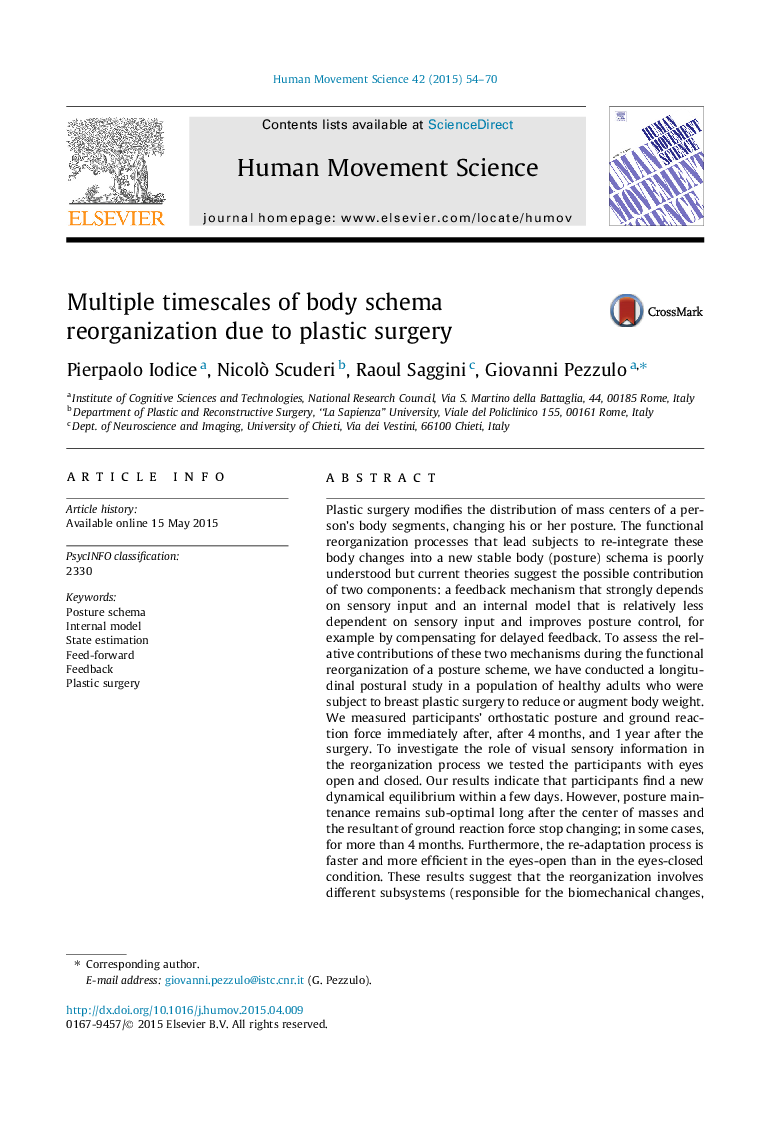| کد مقاله | کد نشریه | سال انتشار | مقاله انگلیسی | نسخه تمام متن |
|---|---|---|---|---|
| 928230 | 1474223 | 2015 | 17 صفحه PDF | دانلود رایگان |
• We studied the posture readaptation process after plastic surgery.
• We report two timescales of posture readaptation, fast and slow.
• The two timescales map to feedback and internal model mechanisms in motor control.
• Body schema reorganization following plastic surgery is a multistep process.
Plastic surgery modifies the distribution of mass centers of a person’s body segments, changing his or her posture. The functional reorganization processes that lead subjects to re-integrate these body changes into a new stable body (posture) schema is poorly understood but current theories suggest the possible contribution of two components: a feedback mechanism that strongly depends on sensory input and an internal model that is relatively less dependent on sensory input and improves posture control, for example by compensating for delayed feedback. To assess the relative contributions of these two mechanisms during the functional reorganization of a posture scheme, we have conducted a longitudinal postural study in a population of healthy adults who were subject to breast plastic surgery to reduce or augment body weight. We measured participants’ orthostatic posture and ground reaction force immediately after, after 4 months, and 1 year after the surgery. To investigate the role of visual sensory information in the reorganization process we tested the participants with eyes open and closed. Our results indicate that participants find a new dynamical equilibrium within a few days. However, posture maintenance remains sub-optimal long after the center of masses and the resultant of ground reaction force stop changing; in some cases, for more than 4 months. Furthermore, the re-adaptation process is faster and more efficient in the eyes-open than in the eyes-closed condition. These results suggest that the reorganization involves different subsystems (responsible for the biomechanical changes, the re-calibration of feedback mechanisms, and the re-adaptation of internal models), which act at different timescales.
Journal: Human Movement Science - Volume 42, August 2015, Pages 54–70
